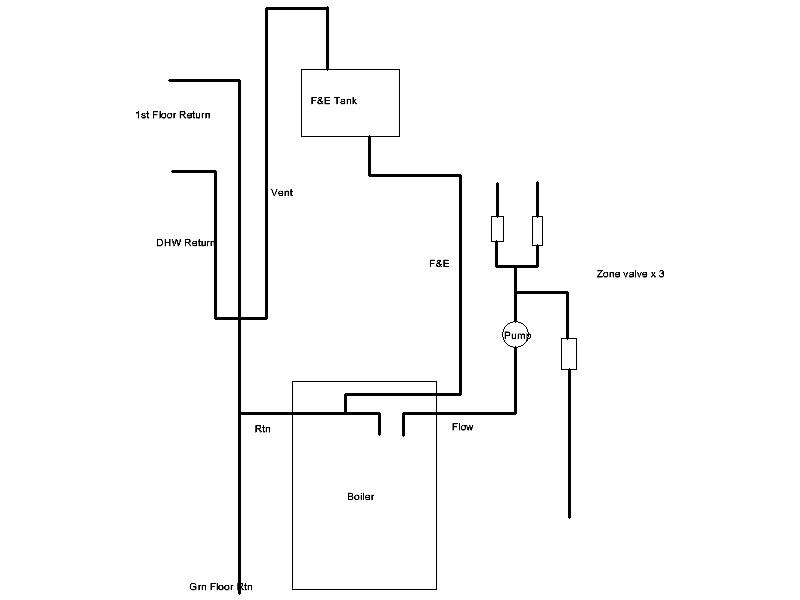- Joined
- 28 Feb 2008
- Messages
- 23
- Reaction score
- 0
- Country

Looking for advice please. I have recently had my oil fired central heating boiler replaced and everything appears to be working fine. However, I have noticed that the vent pipe to the F&E tank has been installed on the return line at the point where the pipe work enters the boiler. The feed and expansion connection is as expected on the the flow pipe just before the pump. I have read several threads on this site recommending that these 2 pipes should be close together and on the flow side before the pump. Can anyone see any disadvantages of my setup or is it acceptable. The system was commissioned by an OFTEC registered engineer.

